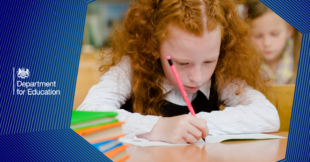
Today, schools find out how pupils have performed in the key stage 2 (KS2) national curriculum tests, often referred to as SATs.
The assessments are used to measure primary school performance, allowing teachers and parents to pinpoint where extra help might be needed as pupils move into secondary school.
This year’s results indicate that children are catching up on learning post-pandemic. In most subjects, a higher proportion of pupils reached the expected standard compared to last year.
Here, we break down in detail what the SATs results this year tell us.
What do SATs results show?
This year has seen an improvement in the majority of subjects compared to last year, suggesting that pupils are continuing to catch up on learning after the pandemic.
In particular, we’ve seen better results in maths and writing than in 2022, while reading standards remain at pre-pandemic levels.
How do SATs results compare to previous years?
Today’s results showed that 73% of pupils met the expected standard in maths – up from 71% in 2022. Writing results were also better than last year.
Overall, the same number of pupils met the expected standard in reading, writing and maths combined as last year (59%). However, fewer pupils met the expected standard than in 2019 (65%). Grammar, punctuation and spelling results also remain unchanged from 2022.
Pupils who met the expected standard in reading is down from 2022, from 75% to 73%. However, this is still much higher than in 2016 when only 66% met the expected standard. This is also in line with pre-pandemic standards – 73% met the expected standard in reading in 2019. This suggests progress is being made in catching up after the pandemic.
Was the reading test this year more difficult?
The Standards and Testing Agency (STA) confirmed that the content of this year’s test was at the appropriate level of difficulty based on the specification in its test framework.
Tests will vary from year to year, and the raw mark that pupils need to meet the expected standard changes depending on the overall difficulty of a test. It will be lower if the paper is found to be more difficult, and higher if it’s easier.
This year, the threshold was set at a lower raw score than in 2022, meaning the 2023 paper was more difficult than the previous year. However, this is not the lowest the threshold has been since 2016. This process makes sure that results reflect standards consistently, even though the difficulty of the tests varies each year.
What are you doing to improve standards in key subjects?
Backed by £1 billion, the National Tutoring Programme helped thousands of pupils who need extra support, so that more children leave primary school with a secure grasp of reading and writing.
On top of this, we’ve invested £60 million in our English Hubs programme and £100 million in our Maths Hubs programme to build children’s literacy, speaking and numeracy skills.
We’re also launching a new and updated Reading Framework, which has been expanded from reception and Key Stage 1 to cover Key Stage 2 and 3 to help schools improve reading for all pupils so they leave primary able to engage confidently and passionately with reading in all subjects at secondary school. It also provides guidance to teachers in Key Stage 2 and secondary schools on how to support those pupils who still need help with reading.